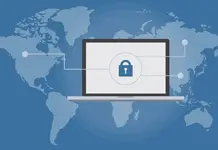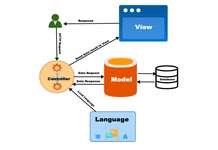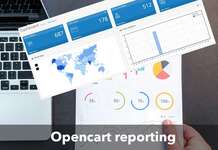Introduction:
Delivery management software is essential for smooth and effective operations in the ever-changing world of supply chain management and e-commerce. The sector is expected to undergo major changes in 2023 as a result of shifting customer expectations and technology breakthroughs. This article examines the new directions in delivery management software and looks ahead to the innovations that will change how companies manage their supply chains and improve the client experience in general.
1. Tracking and Visibility in Real-Time:
The emphasis on real-time visibility and tracking is one of the major themes influencing delivery management software in 2024. Businesses may give consumers accurate information on the location and status of their delivery by integrating Internet of Things (IoT) sensors with cutting-edge GPS technologies. This improves openness and enables proactive problem-solving in the event of delays or unanticipated problems.
For Instance: Amazon Prime
The delivery mechanism offered by Amazon Prime serves as an example of the need for real-time monitoring and tracking. Using the Amazon app, customers can monitor their products in real-time and receive information on their whereabouts, the estimated time of delivery, and any possible delays. This degree of openness not only satisfies contemporary consumer demands but also establishes a standard for the sector. Similar services will probably be included in delivery management software, giving clients peace of mind and information about the progress of their goods.
2. Predictive Analytics with the Goal of Optimizing Routes:
It is anticipated that delivery management software in the future will use predictive analytics to optimize routes. In order to determine the most effective delivery routes, machine learning algorithms will examine past data, current weather, traffic patterns, and other factors. Optimizing fuel use, not only cuts down on delivery times but also saves money and has a less negative environmental effect.
For Instance: UPS ORION
Predictive analytics is best demonstrated by the UPS On-Road Integrated Optimization and Navigation (ORION) system. ORION helps UPS drivers choose the best routes for deliveries by evaluating information including package weight, destination, and current traffic patterns. Businesses will use similar predictive analytics as delivery management software develops to improve overall operational efficiency, shorten delivery times, and optimize routes.
3. Drones and Autonomous Vehicles:
Last-mile delivery is about to change with the introduction of drones and driverless cars. The year 2024 will probably see the incorporation of autonomous delivery system integration elements into delivery management software. Using drone technology to ensure the safe and effective delivery of items, particularly in metropolitan areas, is one aspect of this. Other tasks include controlling fleets of autonomous vehicles and route planning.
For Instance: FedEx SameDay Bot
About autonomous delivery, FedEx’s SameDay Bot is a progressive strategy. Delivering little parcels to clients, the bot is made to maneuver across streets and sidewalks. Deliveries managed by delivery management systems will be able to coordinate and optimize the movements of these cutting-edge delivery systems as the use of drones and autonomous vehicles grows.
4. Contactless Delivery and Authentication:
The need for contactless delivery has grown as people continue to adjust to the post-pandemic reality. With capabilities like facial recognition and biometric verification, future delivery management software will concentrate on improving contactless delivery alternatives. By removing the requirement for in-person contact, these innovations expedite the delivery process while simultaneously prioritizing the safety of the consumer.
For Instance: DoorDash Contactless Delivery
Through the introduction of contactless delivery alternatives during the pandemic, DoorDash, among other firms, has demonstrated an increase in contactless delivery. Clients have the option to leave their orders at the door, and delivery staff may use the app to verify the delivery. Delivery management software is expected to follow suit, adding even more sophisticated contactless features like facial recognition and biometric verification for safe and convenient deliveries.
5. Blockchain for Supply Chain Transparency:
Applications of blockchain technology, including delivery management software, are becoming more and more common in supply chain management. We should anticipate more blockchain integration for improved supply chain transparency in 2023. Ensuring that each stage of the delivery process is documented in an unchangeable and secure ledger, lowers the possibility of fraud and offers a reliable method for all parties involved.
For Instance: IBM Food Trust
Blockchain technology is being used by IBM Food Trust to improve food supply chain transparency. Customers and other stakeholders may follow the path taken by food items from farm to table with the help of this practical application. Similarly, delivery management software may use blockchain technology to provide an unchangeable, transparent ledger that lowers risk and offers a thorough picture of the supply chain process, and reduces the risk of fraud.
6. Customer-Centric Personalization:
Personalized experiences are what delivery management software will be able to provide in the future. Companies will use client information and preferences to customize delivery alternatives, including preferred delivery locations, time slots, and packaging options. This not only raises consumer happiness but also cultivates brand loyalty in a market that is becoming more and more competitive.
For Instance: Personalized Recommendations for Uber Eats
Uber Eats uses machine learning algorithms to provide customized meal suggestions according to past orders and customer preferences. This degree of tailored, customer-focused experience improves the user interface. With the use of delivery management software, companies will be able to better serve their customers by customizing delivery options such as preferred delivery locations, time slots, and packaging options. This will increase customer loyalty.
Conclusion:
In conclusion, the TransGenie Delivery Management Software shows up as the ideal answer as companies prepare for the prospects and difficulties of 2024. TransGenie puts itself at the forefront of innovation in the delivery management industry with a comprehensive strategy that includes real-time visibility, predictive analytics, integration with autonomous systems, advanced contactless options, blockchain transparency, and customer-centric personalization.
By using TransGenie, businesses may meet and even surpass the expectations of today’s consumers by streamlining their processes and improving the entire customer experience. Businesses can stay flexible in a fast-changing environment because of the software’s capacity to react to new trends.






